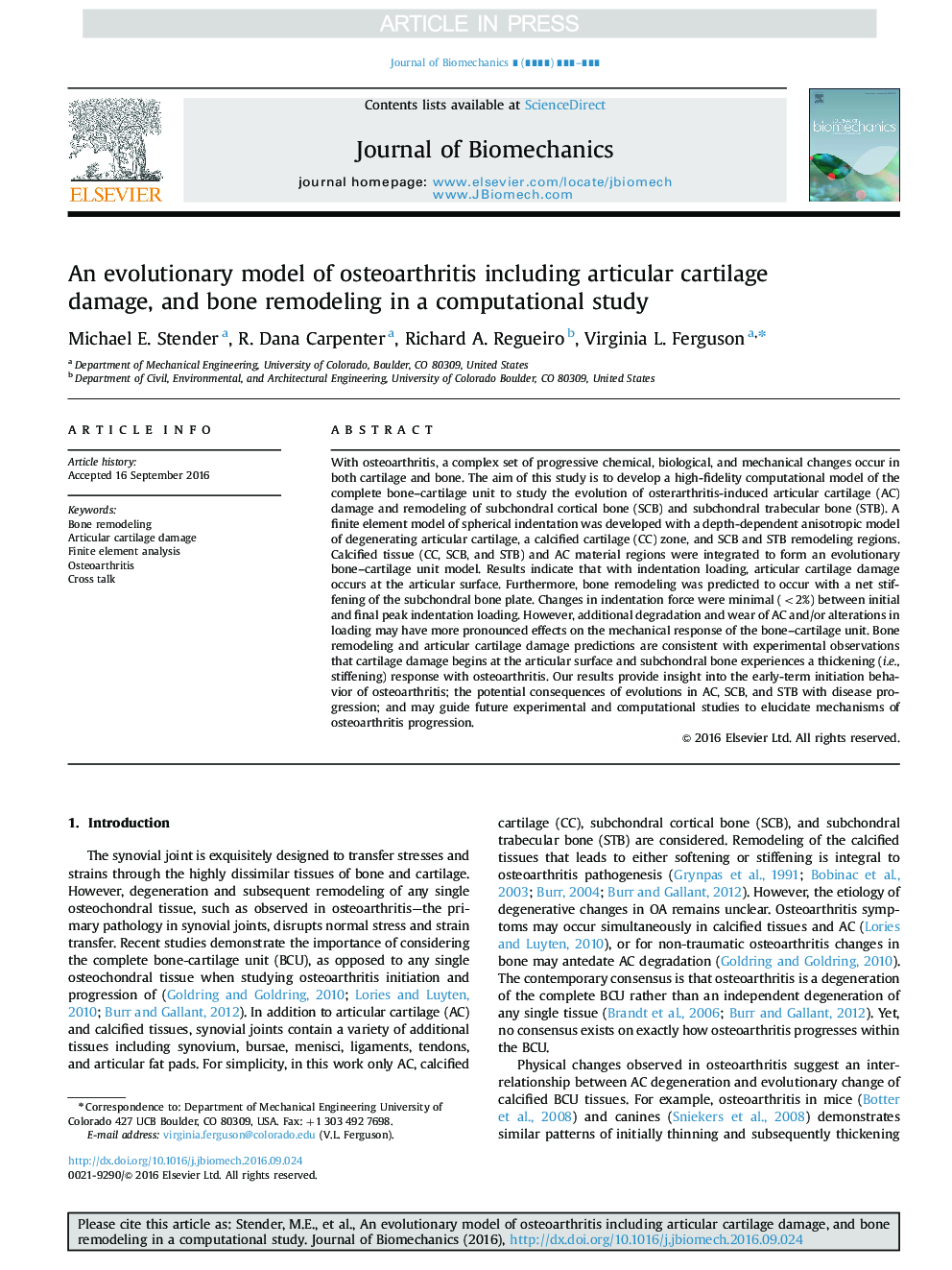| Article ID | Journal | Published Year | Pages | File Type |
|---|---|---|---|---|
| 5032561 | Journal of Biomechanics | 2016 | 7 Pages |
Abstract
With osteoarthritis, a complex set of progressive chemical, biological, and mechanical changes occur in both cartilage and bone. The aim of this study is to develop a high-fidelity computational model of the complete bone-cartilage unit to study the evolution of osterarthritis-induced articular cartilage (AC) damage and remodeling of subchondral cortical bone (SCB) and subchondral trabecular bone (STB). A finite element model of spherical indentation was developed with a depth-dependent anisotropic model of degenerating articular cartilage, a calcified cartilage (CC) zone, and SCB and STB remodeling regions. Calcified tissue (CC, SCB, and STB) and AC material regions were integrated to form an evolutionary bone-cartilage unit model. Results indicate that with indentation loading, articular cartilage damage occurs at the articular surface. Furthermore, bone remodeling was predicted to occur with a net stiffening of the subchondral bone plate. Changes in indentation force were minimal (<2%) between initial and final peak indentation loading. However, additional degradation and wear of AC and/or alterations in loading may have more pronounced effects on the mechanical response of the bone-cartilage unit. Bone remodeling and articular cartilage damage predictions are consistent with experimental observations that cartilage damage begins at the articular surface and subchondral bone experiences a thickening (i.e., stiffening) response with osteoarthritis. Our results provide insight into the early-term initiation behavior of osteoarthritis; the potential consequences of evolutions in AC, SCB, and STB with disease progression; and may guide future experimental and computational studies to elucidate mechanisms of osteoarthritis progression.
Related Topics
Physical Sciences and Engineering
Engineering
Biomedical Engineering
Authors
Michael E. Stender, R. Dana Carpenter, Richard A. Regueiro, Virginia L. Ferguson,
